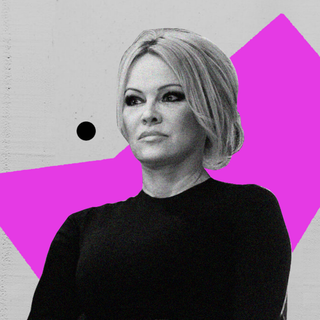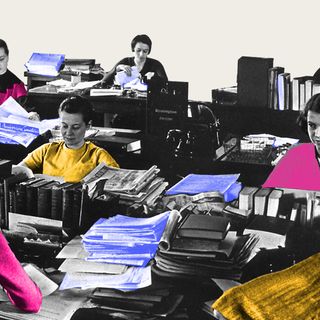
How Our Evolving Idea of Intimacy Led to the Decline of Suhaag Raat’s Cultural Importance
The cultural legacy of “suhaag raat” appears to be tarnished with values we don’t subscribe to anymore — and, in fact, have even begun criticizing vocally.

Suhaag raat, or the wedding night when a marriage is “consummated,” was an omnipresent part of cultural discourse when millennials – and, maybe, even Gen Zs – were growing up. It was everywhere — from movies to TV shows to ads to song lyrics to discussions on men’s virility and women’s virginity. But in the recent past, its cultural relevance seems to be waning – at least in privileged-class circles of tier-one cities. But what has been driving suhaag raat away from the popular imagination or, at least, restricting its once-ubiquitous reach?
Like most people her age, Smriti, 31, who lives in Mumbai, was conditioned to look at suhaag raat as a “big deal.” What changed that for her as she grew up was simply that she had sex way before she got married. Talking about the night of her wedding, she said, “He was at his friend’s house, drunk and passed out. I spent the night in my house, where my parents live.”
Smriti’s experience isn’t isolated. However, it’s not as if people were simply not having premarital sex a decade ago; it was just frowned upon a lot more then, than it is now. That’s, perhaps, one of the reasons why suhaag raat-scenes were far more common onscreen too; it was, after all, the only way to portray a couple indulging in socially-sanctioned sex. Now, with both premarital sex and live-in relationships gaining more cultural acceptance in India, the importance once accorded to suhaag raat is, naturally, declining.
In many ways, this cultural shift speaks to the evolving idea of intimacy, too — for many married couples, sex is no longer just about making babies anymore. Instead, it’s about spending quality time with each other, sharing affectionate moments, making memories. And, unfortunately, weddings — especially the big, fat Indian ones — don’t leave couples with the emotional bandwidth for that.
“Weddings are not great foreplay… They’re joyous occasions, of course, but they’re rife with emotion, stress, and anxiety. Most couples end up getting drunk and eating large meals. You’re dancing for hours in uncomfortable clothing and shoes. You’re lucky to make it back to the hotel room in one piece,” says Vanessa Marin, a sex therapist.
As a result, often, couples that decided to “save themselves until marriage,” too, don’t always end up having sex on their wedding night. “[On our wedding night,] we hugged, kissed, rejoiced that we were finally married, browsed through our wedding pictures together, and went to sleep cuddling each other,” recalls, D., 29.
Related on The Swaddle:
How Marriage Counseling in India Can Reinforce Unequal Gender Roles
Moreover, as a result of society’s increased focus on emotional intimacy, movies and TV shows have increasingly “begun centering their narratives of intimate relationships [marital or otherwise] on wider, more complex issues like trauma, trust, and sexuality, among others,” Rashi Bhargava, Assistant Professor of sociology at the University of Delhi, says. Fresh mainstream releases like Atrangi Re, Gehraiyaan, and Badhaai Do speak to Bollywood’s changing relationship with intimacy. Moreover, even when recent movies like Lust Stories have depicted suhaag raat, it’s been from the perspective of female desire and sexual satisfaction.
While movies are a reflection of prevailing cultural consciousness, they also hold the power — in India, at least — to inspire our collective imagination. It is, perhaps, safe to assume, then, that cinema shifting gears away from suhaag raat has dented its cultural relevance for the masses too — even if to a small extent.
Further, not only has the definition of intimacy become broader, but it is also moving towards greater inclusivity. In its essence, suhaag raat, focuses on two things: male satisfaction and producing children. “[But] we are not talking about sexual desires only within the confines of marital institution anymore. We are talking about sexual desires at all levels, including what women want out of relationships — sexually, emotionally, whatever it might be,” Bhargava notes. With the scope of discourses around sexual intimacy beginning to include what women want in recent years, some parts of society have undergone a slow and steady – almost organic – shift away from the tradition.
Besides, in a more conservative India, the templates, routines, and rituals associated with suhaag raat – like consuming paan, drinking milk, and making love on a white bed strewn with rose petals – perhaps, helped people feel more comfortable with the idea of indulging in sexual intercourse. At the time, due to the scarcity of discussions around sex, vocabulary on the subject was limited too. As such, the term “suhaag raat” – as well as its concept – fulfilled that gap. Now, in urban settings, terms for different kinds of sexual encounters and relationships – like friends with benefits, hook-up, hate sex, make-up sex, one-night stand – has rendered the need for the term “suhaag raat” obsolete.
Nonetheless, there are, of course, couples who do have sex on their wedding night. “We changed into our pajamas, burst some balloons the hotel staff had kept in our room, poured ourselves some gin and tonic, watched Squid Games, and then had sex before falling asleep,” R., 30, says. Since she was comfortable enough with the idea of sex, and the prospect of engaging in it with her long-term partner, she didn’t need to rely on the almost manual-esque set of suhaag raat-rituals – to be sexually intimate.
R.’s experience of deviating from the customs attests to how the term, “suhaag raat,” and its accompanying rituals have become almost cringe-inducing for many millennials. “It’s such a hilarious term,” Smriti says.
Related on The Swaddle:
Marriage Is an Inherently Unfeminist Institution
She also admits to hating what suhaag raat entails, “The entire concept is very sexist and patriarchal… The man hasn’t bought me to have sex with him.”
Given that marriage itself has historically been rooted in ideas of heteronormativity, the rituals and practices surrounding suhaag raat, too, are weighed down by its cultural import. The lines, “Suhaag raat hai, ghoonghat utha raha hoon main…” — which translates to, “It’s our wedding night; I’m lifting your veil” — capture the essence of what we’re taught about suhaag raat. A husband will lift the veil of his coy bride, eventually undressing her and initiating intercourse. First, this fails to accommodate non-cishet unions, which has affected its relevance in a society that is attempting to steer away from heteronormativity — slow as it might be. Second, the suhaag raat-script also establishes the highly heteronormative roles people must play on their wedding night, which many cishet individuals may shun too. As D. notes, “discovering the feminist in me, made me let go of many patriarchal ideas [like the ones associated with suhaag raat].”
Further, “[A]s sweet and romantic [as] this ritual seems to be… suhaag raat is one of the laying grounds for marital rape, particularly in the case of arranged marriages,” Kartikeya Shankar wrote in The Times of India. Shankar argues that, as a society, we teach men that marriage gives them the license to engage in sexual intercourse with their wives, and with suhaag raat being the first time this “teaching” comes to fruition, the ritual somewhat epitomizes male entitlement to the bodies of their female spouses. In addition, conditioning women to “please” their husbands on their wedding nights, and “submit” to their desires, sets the foundation that enables the aforementioned entitlement.
Just like Smriti and D., many Indians are becoming more and more aware of the patriarchal constructs marriage is rooted in. While many of them still opt for marriage — to be able to rent houses more easily, put an end to never-ending harassment from relatives, obtain travel visas without as much hassle, and derive benefits on taxes, inheritance, insurance, and loans, among others — they often end up skipping rituals that don’t align with their principles. As such, kanyadaan had become the poster-child of patriarchal wedding rituals; suhaag raat, too, appears to be in tow.
In essence, the cultural legacy of suhaag raat appears to be tarnished by values we don’t subscribe to anymore. As such, there seems to exist a subconscious sentiment seeking to relegate suhaag raat to the status of a relic from the past. While that might not resonate with the worldview of every single Indian, it does provide hope for a cultural shift already being in the works.
Devrupa Rakshit is an Associate Editor at The Swaddle. She is a lawyer by education, a poet by accident, a painter by shaukh, and autistic by birth. You can find her on Instagram @devruparakshit.
Related


How Fact‑Checking in News Started Out as a Woman’s Job
